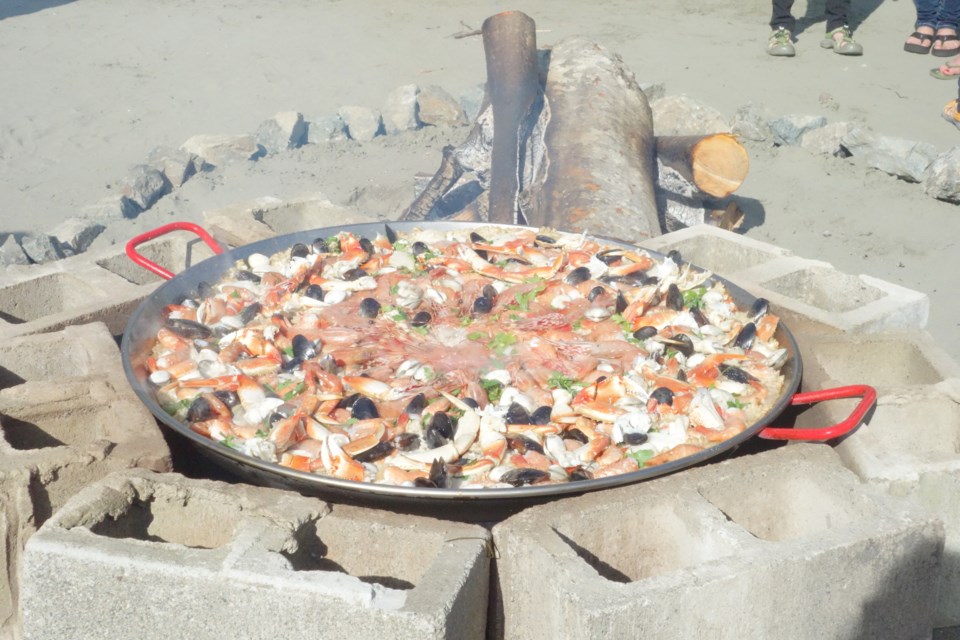Imagine being in Madrid or Barcelona, eating a paella filled to the rim with rice covered with seafood, chorizo, chicken, peas, red and green peppers, while sipping on sangria by the beach.
Sounds great doesn’t it? Depends on who you ask.
The key word in that paragraph was “imagine”, because it’s a visual best left to the imagination unless you want to hear Spain cry. Valencia probably stopped reading after “Madrid or Barcelona”, but fair enough, paella is rightfully theirs to begin with.
In Spain, you could find a scenario like the one I described, but any paella filled to the top with chorizo, red peppers, or peas, and paired with sangria would be a joke to any Spaniard.
Authentic paella is never made with chorizo or paired with sangria, not to say they wouldn’t serve it if you asked for it, but it would be “turista paella”. And never should it be filled to the top. The point is to have a shallow layer of rice to allow the rice to crisp and caramelize.
It is one of those traditional dishes that has been bastardized, or reinterpreted for a foreign clientele.
Modern interpretations of paella can still taste good, after all almost anything mixed with rice can be delightful. But just like Neapolitan pizza, there are rules to the art of paella.
Unlike Italy, Spain doesn’t certify and label everything to ensure authenticity, so it can be challenging to know if what you’re getting is legit. However, a certification doesn’t necessarily guarantee authenticity either, but at least there are more or less guidelines to uphold certain standards and expectations.
Let’s start with the word "paella". It’s commonly known as a Spanish rice dish, however the word “paella” actually translates to the name of the pan. Therefore any rice dish made in a paella is considered a “paella”, but a Valencian paella is specific.
Purists of the Valencia paella would say it consists of chicken, rabbit, green peppers, lima beans, Runner beans, Great Northern Beans, tomato, saffron, and maybe snails (if you couldn’t afford meat). And the liquid used to cook the white rice is also never broth or stock, but water particularly from Valencia.
Valencia paella and other varieties are offered throughout Spain, even in Valencia, but the meat, seafood and mixed paellas are later creations.
Foreigners also tend to focus on the amount of protein and “toppings”, even though paella is really all about the rice – my favourite part being socarrat (the caramelized bits of rice that stick to the bottom of the paella).
This basic introduction to paella barely scratches the surface of understanding the art and technique behind it, but note that paella started as “peasant food”. It was a poor man’s dish made outdoors on an open fire by field workers to feed many people at once.
Later, it became the dish fathers would make for their families every Sunday, and now it’s evolved into a time-consuming dish enjoyed on special occasions.
Imagine that.
Find Mijuneat the 3rd Annual First Harvest dinner at Willows Inn on Lummi Island, Bellingham on September 23, and at the sold-out Amex Platinum Cardmember dinner at Hawksworth Restaurant on September 30.
Find out more about Mijune at FollowMeFoodie.com or follow her on Twitter and Instagram @followmefoodie.



